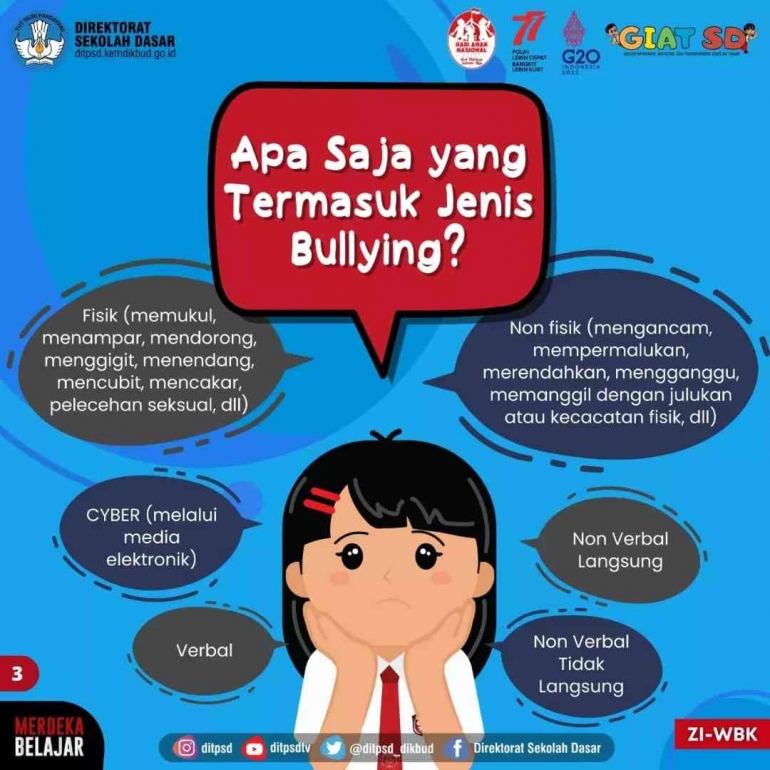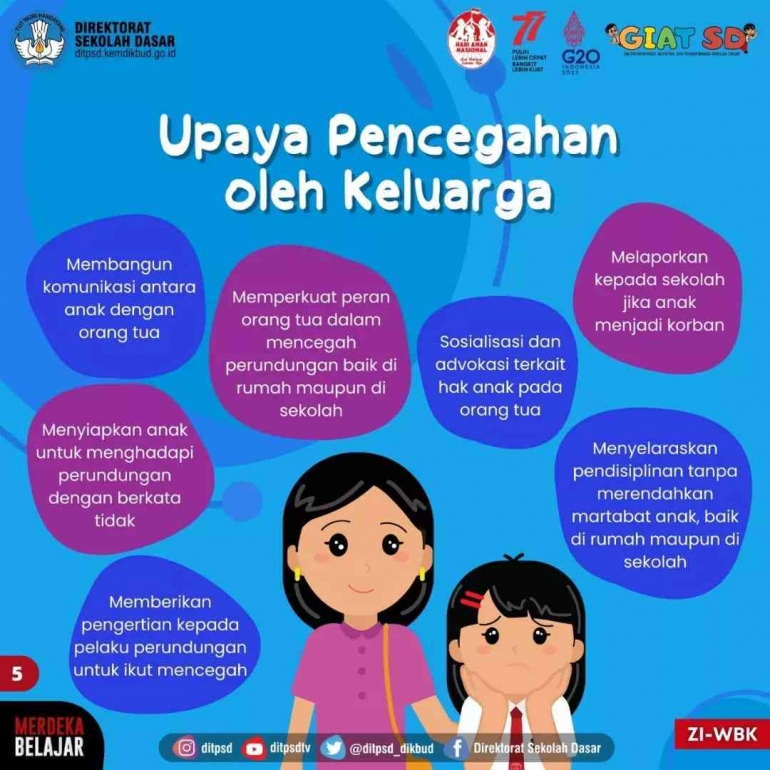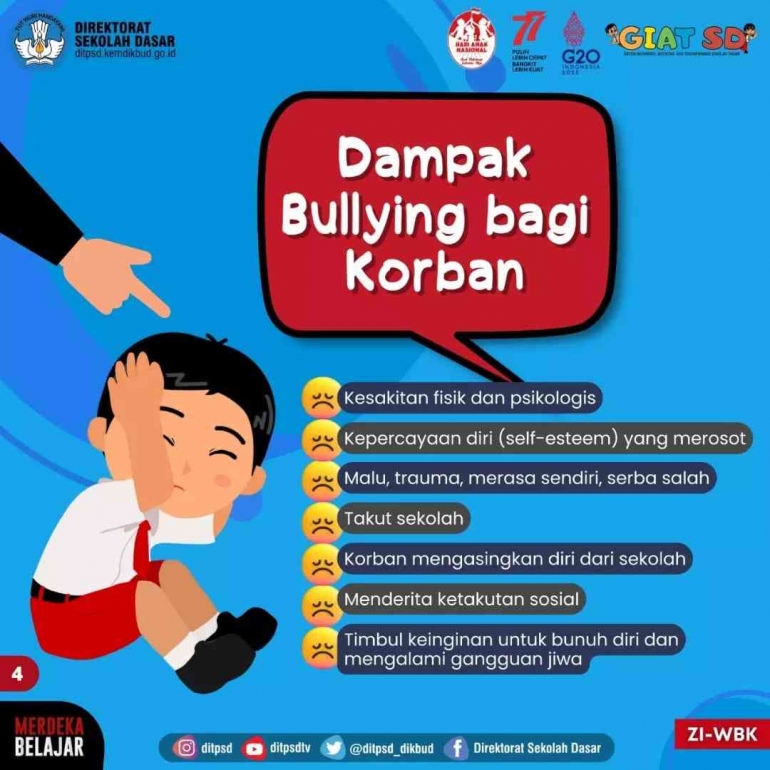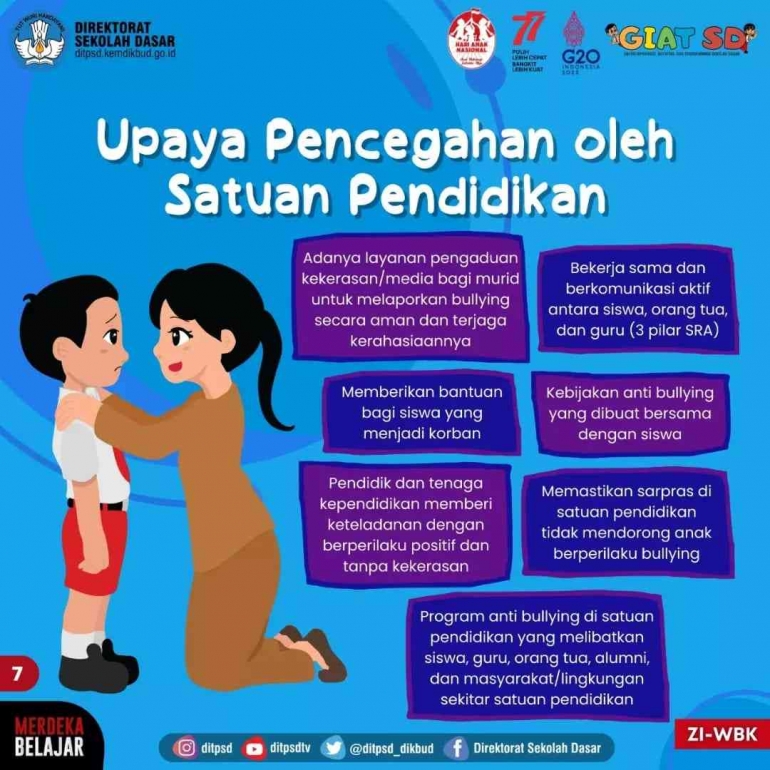Every child has the right to survive, grow and develop and has the right to protection from violence and discrimination as mandated in the 1945 Constitution of the Republic of Indonesia. Children are the priceless treasures of a family, therefore, taking care of them to grow well and develop as expected is an absolute obligation for both parents, namely father and mother.
How to choose a good education, good relationships, a supportive environment is appropriate for parents to guide their children. Lately, cases of violence against children have often occurred, either in the form of physical, sexual, emotional abuse, or neglect of children. Most cases of violence against children occur in schools, in the environment or organizations where children interact.
Reporting from data from the Indonesian Child Protection Commission (KPAI), 35% of 114 cases of violence occurred in the Educational Unit environment. In addition, 46 cases of children ending their lives were also recorded, 48% of which occurred in Educational Units or the victim children were still wearing school uniforms (Pusdatin KPAI, 2024). The number of violence against children in Educational Units continues to increase, this must be addressed seriously by moving simultaneously to end Violence against Children in Educational Units.

Violence committed against children will have an impact on the suffering experienced by the child, both physically, emotionally, and psychologically. It is certain that this is not the only case of violence against children that occurs in this country. Violence against children is an act of physical violence, sexual, emotional abuse, or neglect of a child. Most violence against children occurs in the child's own home, at school, or in the environment where the child interacts.
Child abuse can cause physical and psychological problems in the child later on. Physically, it can be seen from all over his body there are signs of abuse. Psychologically, children who are victims of violence can experience mental problems such as: post-traumatic stress disorder, depression, anxiety, and psychosis.

Violence in the school environment, whether physical, verbal, or psychological, is a serious problem that continues to haunt the world of education. Ironically, a place that should be a safe space for children to learn and develop has instead become a battlefield for them. Bullying, physical violence by teachers or peers, and sexual harassment are some forms of violence that often occur.
Violence against children in educational units that occurs in schools not only leaves physical scars, but also deep emotional wounds. Victims of violence often experience psychological trauma, learning difficulties, and withdrawal from the social environment. In the long term, the impact of violence can manifest in the form of depression, anxiety, and even antisocial behavior.
Violence in schools

School violence is a complex problem that requires a comprehensive solution. With the cooperation of all parties, we can create a safe and comfortable school environment for all children. Remember, every child deserves protection and the opportunity to grow and develop optimally.
Law Number 35 of 2014 concerning Amendments to Law Number 23 of 2002 concerning Child Protection has expressly regulated the protection of children from all forms of violence, including in the school environment.
Article 54 of the law states that children are required to receive protection from acts of physical violence, psychological violence, sexual crimes, and other crimes committed by educators, education personnel, fellow students, and/or other parties.
The definition of a child according to Law Number 35 of 2014 is as follows:
"A child is someone who is not yet 18 (eighteen) years old, including a child who is still in the womb."
The definition of violence according to Article 1 number 15 a of Law Number 35 of 2014 concerning Amendments to Law Number 23 of 2002 concerning Child Protection (Law No. 35/2014), namely:
"Violence is any act against a child that results in physical, psychological, sexual misery or suffering, and/or neglect, including threats to commit acts, coercion, or unlawful deprivation of liberty."
Perpetrators of violence against children can be charged under Article 80 (1) in conjunction with Article 76 c of Law 35 of 2014 concerning Child Protection with the threat of a maximum prison sentence of 3 (three) years 6 (six) months and/or a maximum fine of IDR 72 million.
Article 76 c Law No. 35 of 2014
"Everyone is prohibited from placing, allowing, committing, ordering, or participating in committing violence against children."
Article 80 (1) of Law No. 35 of 2014
"Any person who violates the provisions as referred to in Article 76 c, shall be punished with imprisonment for a maximum of 3 (three) years and 6 (six) months and/or a maximum fine of Rp. 72,000,000.00 (seventy two million rupiah)."
In addition, if it results in serious injury, the perpetrator can be threatened with a maximum prison sentence of 5 (five) years and/or a maximum fine of IDR 100,000,000.00 (one hundred million rupiah).
Article 80 (2) of Law No. 35 of 2014
"In the event that a child as referred to in paragraph (1) is seriously injured, the perpetrator shall be punished with a maximum prison sentence of 5 (five) years and/or a maximum fine of IDR 100,000,000.00 (one hundred million rupiah)"
However, in practice, the application of law to cases of violence in schools still often faces various obstacles. Some of them are:

Lack of legal awareness: Many parties, including parents, teachers and students, do not fully understand the importance of reporting cases of violence and the legal protections available;
Social stigma: Victims of violence are often afraid to report it for fear of being seen as weak or ashamed;
Long and complicated legal processes: Long and complicated legal processes make many victims reluctant to pursue their cases;
Lack of effective sanctions: Sanctions given to perpetrators of violence are often considered too light and do not have a deterrent effect.
To address the problem of violence in schools, comprehensive and sustainable efforts are needed, including:Raising awareness: Through campaigns and education, the public needs to be given a better understanding of violence against children, the signs of violence, and how to report and prevent it;

Strengthening the role of schools: Schools must create a safe and inclusive environment, and have clear mechanisms for reporting and handling cases of violence;
Improving teacher quality: Teachers need to be given special training to recognize signs of violence, intervene early, and create a positive classroom climate;
Improving law enforcement: Law enforcement officers need to be more proactive in handling cases of violence against children and provide strict sanctions to perpetrators;
Active role of the family: Parents need to pay attention to signs of changes in their child's behavior and provide the support needed.
Let's work together to create a safe and violence-free school environment.
Baca konten-konten menarik Kompasiana langsung dari smartphone kamu. Follow channel WhatsApp Kompasiana sekarang di sini: https://whatsapp.com/channel/0029VaYjYaL4Spk7WflFYJ2H












